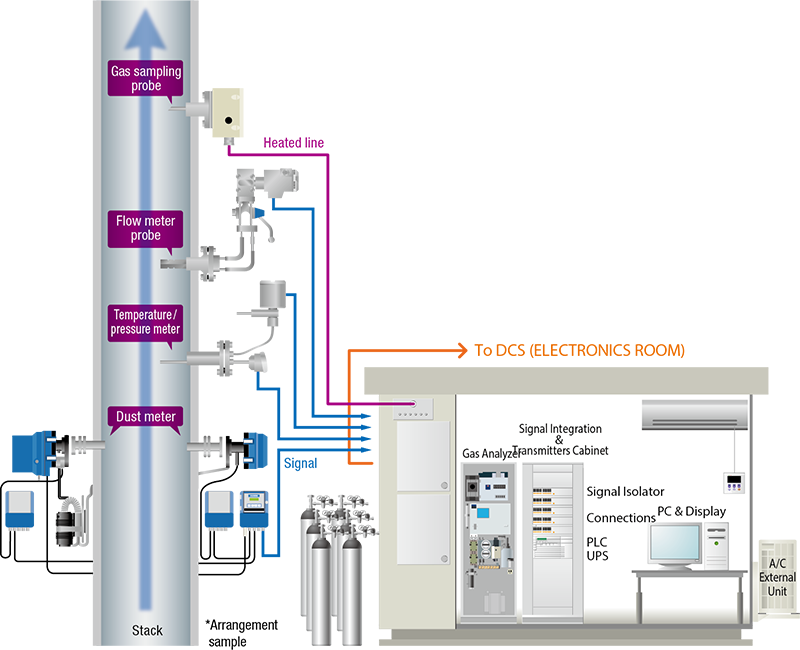Continuous Emission Monitoring Systems (CEMS)
- Home
- Continuous Emission Monitoring Systems | 26 Years Experiences
Services
- Concrete Chimney for Factory
- Bridge and Viaduct Pillar
- Continuous Emission Monitoring Systems
- Concrete Silo Solutions
- Crane Solutions
- Minaret (Sliding mold) Solutions
- New Cement Factory Construction Solutions
- Old Cement Factory Restoration Solutions
- Post Tension Solutions
- Power Plant (Thermal, Solar, Energy, Wind) Solutions
- Raw Meal Silo Solutions
- Sliding Mold Solutions
- Steel Construction Solutions
- Treatment and Digestion Silo
- Slip Form Solutions
- Special Production Machinery Manufacturing
- Freight Elevators
- Waste Water Treatment Plant
- Refractory (Fire Bricks)
- LNG Terminal
- Climbing Formwork Solutions
Contact Us
Catalog
Continuous Emission Monitoring Systems
CEMS is a measurement system where gas, particulate matter concentration and emission rates are measured and reported with the help of conversion functions, graphs and a computer program. Depending on the process and applications, etc., various metal scales, particulate matter, mercury, and flue gas volumetric circulation values can be measured. The main purpose of installing these systems is to reduce air pollution caused by toxic gases such as CO, NOx, SO2, which are released by the combustion of fossil fuels by ensuring continuous control of emission rates.

What are the Pros and Cons?
What are the Advantages?
It is an ideal solution for wet basis measurements as the measuring probe is placed directly into the chimney. Since there are not many components in its structure, it is much more advantageous in terms of price than extractive analyzers.
What are the Disadvantages?
- Since it is mounted directly to the chimney, the decay rate is high due to hot, corrosive and humid environments and the usage period is much shorter.
- When a problem occurs with the probe, the system may need to be completely stopped to remove the probe from the system.
- When there is a deformation at the measurement point, it is not possible to revise it. Calibration and validation is very difficult when the probe is in the chimney. The calibration gas must be transported to the stack with a special piping system.
- Sudden changes in process and ambient air temperature in the stack can cause thermal breakage.
- There is always a risk of breakage of the in situ probe.
- High Quality Systems
- Fast Building
- Experienced Team
Extractive Measurement Method
In the extractive method, the sample is taken from the variant with the acquisition probe, passed through the conditioning unit and sent to the analyzer.
Advantages:
- The other sampling system is much easier to maintain. Also, there is no need to shut down the factory for maintenance. Probe blowback can be done easily.
- Validation and measurement can be done easily.
- Extractive systems work in perfect harmony if they are designed correctly.
- Measurement is done from the analyzer compartment.
Disadvantages:
- Special engineering services are required for the design of the equipment used during the conditioning of the sample gas, especially the sampling systems.
- The amount of moisture and corrosive gases in the flue gas content and gas measurements make it difficult to transport the gas from the stacks to the analyzers in suitable environments.
- Corrosive gases react with the intense humidity and wetness released due to combustion, making in-situ type analyzers unusable.
For this reason, the CEMSs we have installed make measurements with the extractive method.
